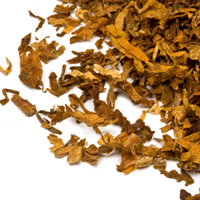Do you have problems setting up satisfactory workflows for analysing pesticide residues in challenging food matrices? Would you be interested in an MS/MS approach that could solve your analytical problems? If you, this on-demand webinar might just be what you need...

 This exclusive Shimadzu Food Safety on-demand presentation provides an in-depth know-how about the various mass spectrometry (MS/MS) workflows that are needed to conduct high throughput pesticide residues analysis in challenging matrices. You will learn about the latest state-of-the-art technologies that mass spec leaders are using globally to deal with pesticide analysis in difficult matrices such as spices and tobacco.
This exclusive Shimadzu Food Safety on-demand presentation provides an in-depth know-how about the various mass spectrometry (MS/MS) workflows that are needed to conduct high throughput pesticide residues analysis in challenging matrices. You will learn about the latest state-of-the-art technologies that mass spec leaders are using globally to deal with pesticide analysis in difficult matrices such as spices and tobacco.
This webinar will not only provide you with technical knowledge but will also help you understand the practical aspects of MS/MS analysis using challenging matrices. If you are keen to learn about the latest advanced MS/MS technologies this presentation will offer insight, knowledge and advice, and will be particularly interesting for those who have faced difficulties while using challenging matrices.
 The presentation is given by Dr Kaushik Banerjee, a National Fellow and Principal Scientist from the ICAR-National Research Centre for Grapes, Pune, India. He is a recipient of Fellow of the Indian National Academy of Agricultural Sciences (FNAAS) and Fellow of the Royal Society of Chemistry (FRSC), London, as well as being the President of the India section of AOAC International and a member of the Scientific Panel of the Food Safety Standards Authority of India (FSSAI) on methods of sampling and analysis. His current area of research predominantly focuses on the development of LC-MS and GC-MS based residue analysis methods for the estimation and management of food and environmental contaminants. He has recently expanded his scope of research to mass spectrometry based plant metabolomics.
The presentation is given by Dr Kaushik Banerjee, a National Fellow and Principal Scientist from the ICAR-National Research Centre for Grapes, Pune, India. He is a recipient of Fellow of the Indian National Academy of Agricultural Sciences (FNAAS) and Fellow of the Royal Society of Chemistry (FRSC), London, as well as being the President of the India section of AOAC International and a member of the Scientific Panel of the Food Safety Standards Authority of India (FSSAI) on methods of sampling and analysis. His current area of research predominantly focuses on the development of LC-MS and GC-MS based residue analysis methods for the estimation and management of food and environmental contaminants. He has recently expanded his scope of research to mass spectrometry based plant metabolomics.




